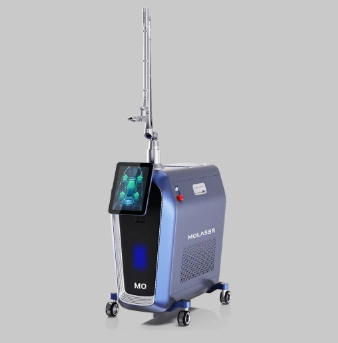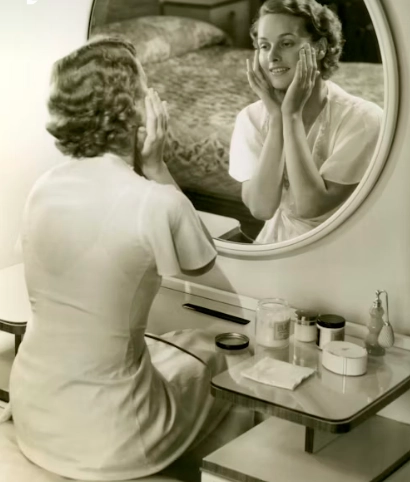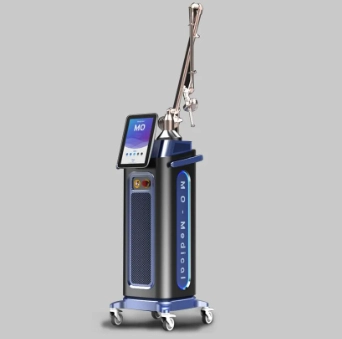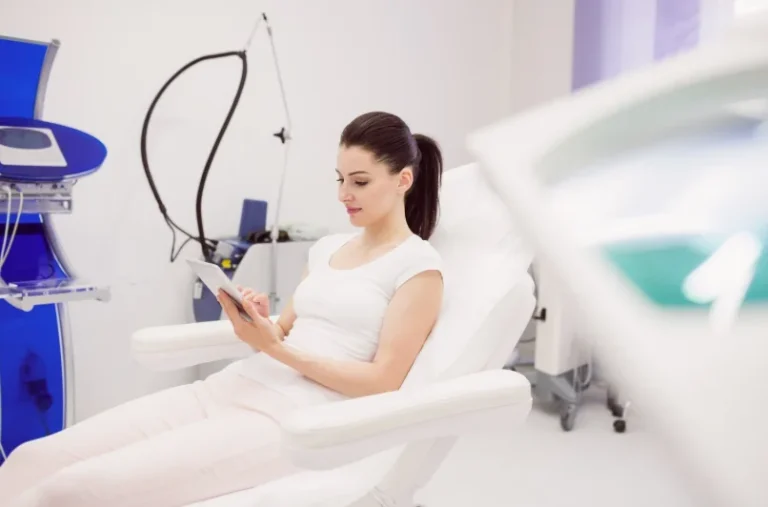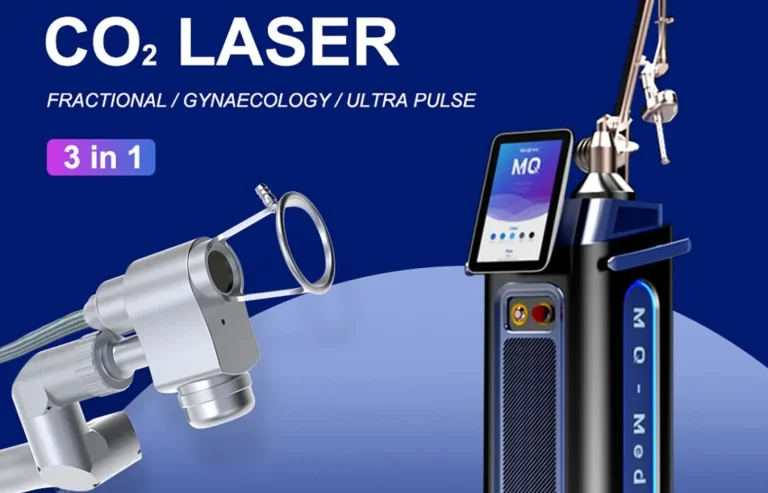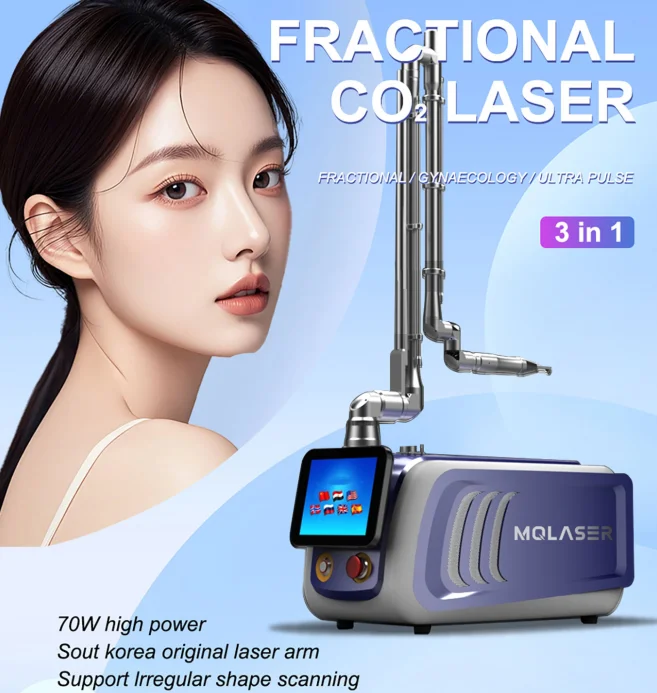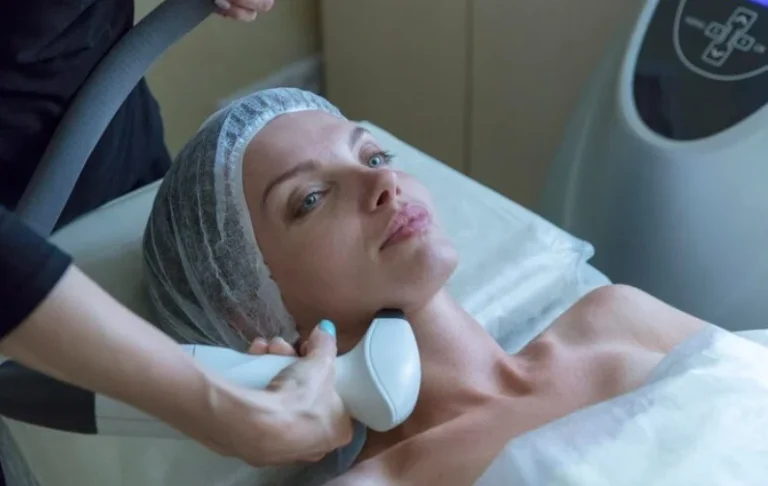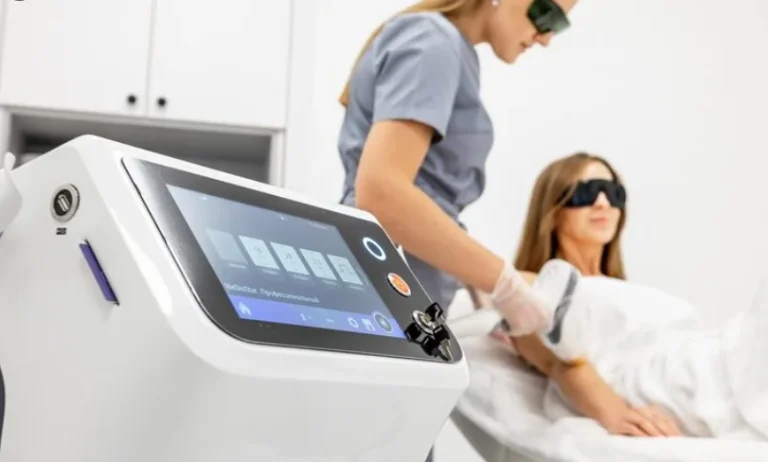Picture your skin as a favorite book, its pages showing tales of acne struggles, surgery marks, or stretch lines from big life changes. Those scars? They’re unwanted plot twists. But what if you could smooth out those pages for a fresh look? CO2 laser treatment is a powerful tool for scar reduction and skin renewal. At MQLASER, we’re excited to help you reveal your skin’s best version with our top-notch technology. This guide explains how CO2 laser treatment works, its perks, and why we’re your go-to partner.

What Causes Scarring?
Scars appear when your skin heals from damage like cuts, burns, or acne. When deeper skin layers get hurt, your body makes collagen to fix it. But this fix can leave bumpy or discolored marks. Common causes include:
- Acne: Leaves pits or raised spots from bad breakouts.
- Surgery: Creates lines from incisions.
- Injuries: Comes from cuts, burns, or scrapes.
- Stretch Marks: Shows up from pregnancy or quick weight shifts.
Knowing what causes scars helps pick the best treatment, like CO2 lasers, for your skin’s needs.
Types of Scars
Scars differ, and understanding their types helps choose the right fix. Here’s a simple chart:
| Scar Type | Description | Common Causes |
| Atrophic | Sunken or pitted marks | Acne, chickenpox |
| Hypertrophic | Raised marks that stay in the wound | Surgery, injuries |
| Keloid | Raised marks that grow past the wound | Genetic factors, injuries |
| Stretch Marks | Thin, streaky lines | Pregnancy, fast weight changes |
Each scar type reacts differently to laser therapy. CO2 lasers work well for many kinds, making them a great choice.
Laser Scar Therapy
Laser scar therapy uses light to improve skin’s look by targeting damaged spots and boosting natural healing. It’s like giving your skin a gentle push to fix itself. CO2 lasers shine because they reach deeper layers for lasting results. Let’s look at why CO2 lasers are special.
This therapy is a non-invasive way to smooth flaws. At MQLASER, we provide tools that make this process easy and effective.
Types of Lasers for Scar Treatment
Different lasers tackle scars, but CO2 lasers often lead the pack. Here’s a quick comparison:
- CO2 Lasers: Go deep to resurface skin and boost collagen. They’re great for tough scars.
- Erbium Lasers: Softer, good for light scars or delicate skin.
- Pulsed Dye Lasers: Focus on red scars, like hypertrophic or keloid ones.
CO2 lasers are top for deep scars and uneven textures. Our DEPPLUS Stationary Fractional CO2 Laser delivers precise results.
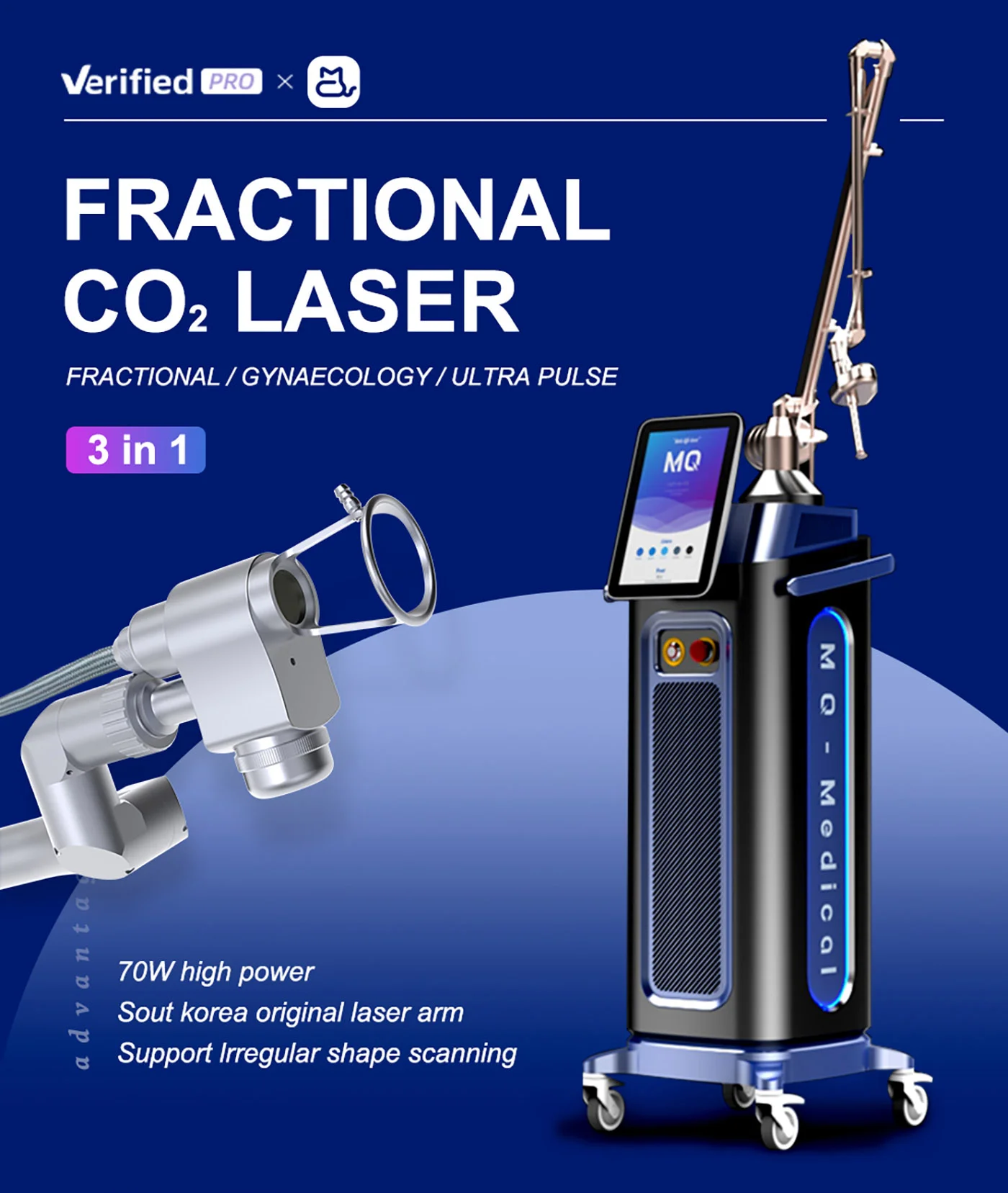
The Process of CO2 Laser Treatment
CO2 laser treatment is a step-by-step process that refreshes your skin. From prep to healing, here’s what happens.
Let’s break it down so you feel ready and confident.
Pre-Treatment Preparation and Guidelines
Before your session, your provider shares steps to get the best results:
- Skip Sun Time: Avoid sun for 2–4 weeks to prevent issues.
- Change Skincare: Stop retinols or scrubs a week before.
- Stay Moist: Use lotion to keep skin ready for healing.
- Talk It Out: Share your goals and health history to plan your treatment.
Good prep makes the process smoother and recovery faster.
How the Procedure is Performed
During treatment, a CO2 laser sends controlled light to your skin. It removes damaged layers and sparks renewal. Here’s the process:
Fractional vs. Traditional CO2 Lasers: Key Differences
- Fractional CO2 Lasers: Hit tiny skin spots, leaving nearby areas untouched. This speeds healing. Our Portable Fractional CO2 Laseris super flexible.
- Traditional CO2 Lasers: Cover bigger areas. They suit severe scars but need more recovery time.
Targeting Scars and Promoting Skin Renewal
The laser clears out damaged skin and boosts collagen growth. This smooths scars and refreshes texture. Sessions take 30–60 minutes. A numbing cream keeps you comfortable.
Post-Treatment Care and Recovery Tips
Healing is key for great results. Try these tips:
- Moisturize: Use a soft, scent-free cream to calm skin.
- Block Sun: Wear SPF 50+ daily to protect healing skin.
- Skip Makeup: Wait 5–7 days to avoid irritation.
- Drink Water: Stay hydrated to help your skin heal.
Expect redness and peeling for 5–10 days. Full results show in 3–6 months as collagen grows.
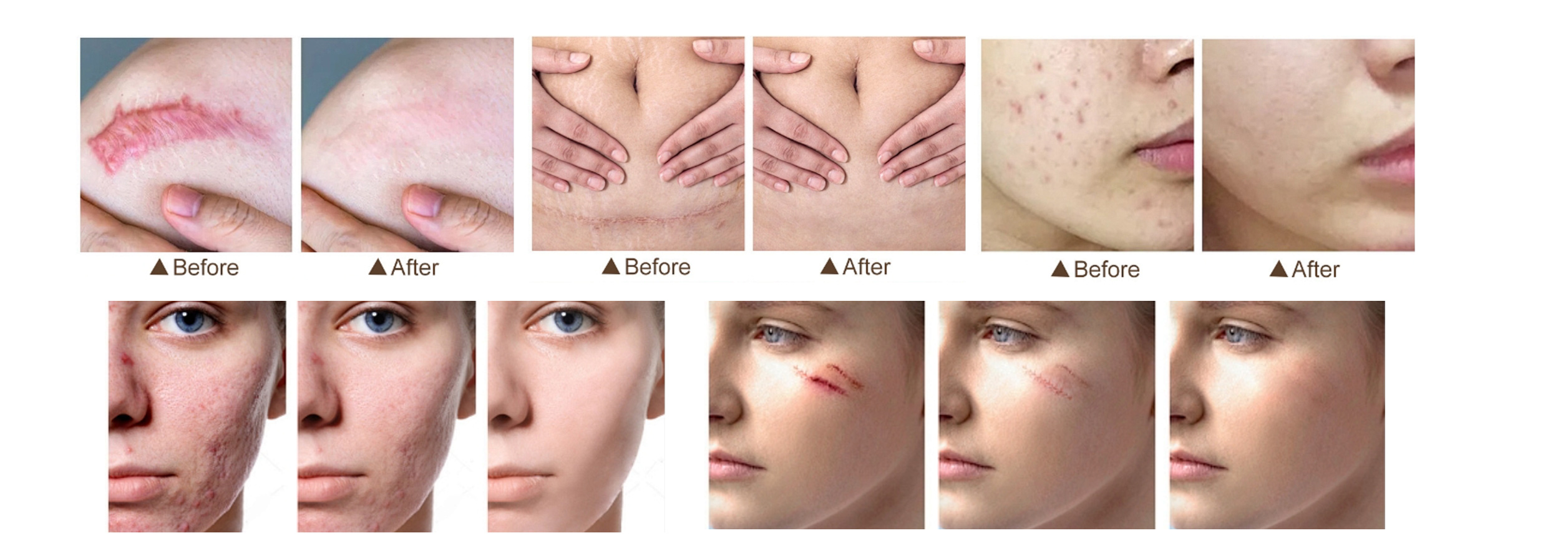
Benefits of CO2 Laser for Scar Reduction and Skin Renewal
CO2 laser treatment brings amazing perks for smoother, brighter skin. Let’s see why it’s so good. Fractional CO2 Laser System fires a laser beam which is split into numbers of microscopic beams, producing tiny dot or fractional treatment zones within the selected target area only.Therefore, the heat of laser only passes deeply through the fractional damaged area.This allows the skin to heal much faster than if the whole area was treated. During the skin self-resurfacing,a great amount of collagen is produced for skin rejuvenation,eventually the skin will look much healthier and younger.
These benefits show why CO2 lasers are a favorite for scar reduction and skin renewal.
Improving Skin Texture and Tone
CO2 lasers smooth bumpy skin and even out color. Whether it’s pitted scars or dull spots, you’ll see a brighter, smoother look over time.
Reducing the Appearance of Scars
CO2 lasers are great at fading scars:
Acne Scars, Surgical Scars, and Stretch Marks
- Acne Scars: Softens pits or rolling marks for a polished look.
- Surgical Scars: Eases raised or line-shaped marks from operations.
- Stretch Marks: Blends streaky lines with nearby skin.
Our tools ensure focused treatment for clear results.
Stimulating Collagen Production for Long-Term Results
CO2 lasers spark collagen growth, which firms and plumps skin over months. This natural boost keeps your skin youthful and strong.
Choosing the Right Provider for CO2 Laser Treatment
Picking a skilled provider ensures safe, great results. Here’s how to choose wisely.
Your provider is key to success, so take time to find the right one.
Factors to Look for in a Dermatologist or Clinic
- Experience: Pick providers who know CO2 lasers well.
- Tools: Make sure they use safe, advanced devices like ours.
- Feedback: Read patient reviews to check care quality.
- Cleanliness: Ensure the clinic follows strict safety rules.
Questions to Ask During Your Consultation
- What results can my scar type expect?
- How many sessions will I need?
- Are there side effects to know about?
- Can I see before-and-after photos?
These questions help you judge expertise and set clear expectations.
MQLASER: A Trusted Name in CO2 Laser Technology
At MQLASER, we’re thrilled to lead in skin care with our advanced CO2 laser tools. In the beauty instrument world, we create devices that help clinics deliver awesome results. MQlaser has a deeply knowledgeable and experienced R & D team, supports customers’ OEM/ODM, and allocates 15% of its annual turnover for new product research and development to ensure the leading efficiency of new product development.
Our products already have international certifications, including CE, ISO, ROSH, etc., proving that the performance and quality of our products conform to international standards.
Let us explain why we’re a trusted name.
Why MQLASER Stands Out as a Reliable Supplier
Since 2008, we’ve led in aesthetic technology, serving over 100 countries. We focus on quality, affordability, and new ideas. This helps clinics offer top treatments. Our DEPPLUS Stationary Fractional CO2 Laser shows our skill.
Commitment to Quality and Innovation in Dermatological Equipment
We put effort into research to make easy-to-use, effective devices. Our lasers are built for precision, safety, and long-lasting use. Want to know more about our tools? Contact us to learn about our range.
Conclusion
CO2 laser treatment is a fantastic way to refresh your skin’s story. It reduces scars and reveals a brighter complexion. From acne marks to stretch lines, it delivers lasting perks with proper care and a good provider. At MQLASER, we’re proud to support this change with our cutting-edge technology. Ready to begin? Check out our solutions at MQLASER and take your first step to glowing skin.
FAQs About CO2 Laser Treatment
Q1 What is the Downtime After a CO2 Laser Procedure?
A1 Downtime depends on the laser type. Fractional CO2 treatments cause 5–7 days of redness and peeling. Traditional CO2 lasers may need 10–14 days. Following care tips helps you heal smoothly.
Q2 Is the Procedure Painful?
A2 With numbing cream used before, most feel only mild discomfort. It’s like a warm, tingly feeling. Your provider will keep you comfortable.
Q3 How Many Sessions Are Required for Optimal Results?
A3 The number of sessions varies by scar type and skin goals. Light scars may need 1–2 sessions. Deeper scars or stretch marks might take 3–5 treatments, spaced 4–6 weeks apart.

